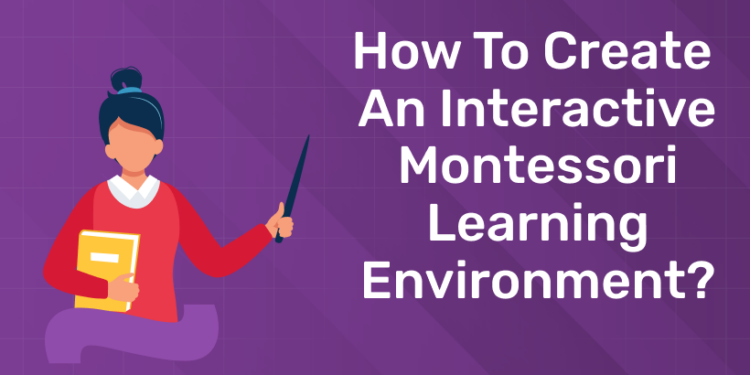Table of Contents
The Montessori approach to education is based on the principles of independence, hands-on learning and exploration. An interactive Montessori environment helps children to explore and learn at their own pace. In this blog, we’ll explore key elements and how to create an interactive Montessori learning environment.
Whether you’re a parent, educator, or caregiver, you’ll discover practical tips and strategies to create a space that nurtures a child’s natural love for learning. Let’s dive into the world of Montessori education and build an environment that inspires growth and discovery!
Start your journey to becoming a certified Montessori teacher! Get free Demo Here!
Importance of an Interactive Learning Environment
An interactive environment is crucial for effective learning. Let us have a look at the various reasons as to why it is important:
- Interaction helps to keep the students motivated and involved. Lack of interaction may lead to boredom and monotony.
- When students indulge in activities like group discussion, debates etc, they develop analytical and reasoning skills.
- Students who learn by doing are able to retain information for a longer time. They are also able to grasp concepts easily.
- Interactive activities help in improving social skills, teamwork, and communication skills, thus making them more confident.
- One of the main benefits of interactive learning is that it involves methods that cater to visual, auditory, and kinesthetic learners. Such methods ensure that everyone benefits from the teachings.
- Interactive learning often includes real life scenarios. This helps the students to apply their knowledge in practical situations.
How to Create an Interactive Montessori Learning Environment?
1: What is the primary focus of the first plane of development in the Montessori method?
A Montessori classroom is very different from a traditional one. The main difference is that it encourages hands-on learning, which in turn increases the curiosity and critical thinking of a child.
Some key ways to create an interactive learning environment are:
- Creating an attractive physical environment: Use furniture of appropriate size, arrange materials on open shelves for easy accessibility, and ensure proper lighting for a calm and focused learning environment.
- Use Hands-On learning materials: Include Montessori materials, real life objects and multi-sensory activities.
- Encourage active participation: Allow the children to choose activities, experiment with the materials and make decisions. This helps them in becoming independent, recognizing their mistakes and correcting them.
- Allow them to explore: This instils curiosity and they learn by exploring.
- Integrate real world learning: Let them explore the nature, and introduce languages through hands on activities.
- Let them learn at their own pace: Do not pressurize them to speed up. You can encourage them asking questions and guiding them.
Conclusion
Creating an interactive classroom is essential for encouraging learning in young children. Montessori classrooms allow children to explore, learn and become independent. Whether at home or in a classroom, incorporating Montessori principles help children develop confidence and love for learning.
An interactive learning environment ensures that children not only gain knowledge but also develop skills for real-world challenges. the key is to encourage active participation and make learning an enjoyable, dynamic experience.
Start your journey to becoming a certified Montessori teacher! Get free Demo Here!
Get Certified & Start Your Montessori Career
Montessori Teacher Training Course by Entri App: Gain expert skills, earn certification, and kickstart your teaching career.
Join Now!FAQs: Creating an Interactive Learning Environment
1. What is an interactive learning environment?
An interactive learning environment is a space where learners actively engage with materials, instructors, and peers. It encourages participation, collaboration, and hands-on experiences to enhance understanding and retention.
2. Why is an interactive learning environment important?
It improves student engagement, promotes critical thinking, supports different learning styles, and enhances knowledge retention. It also fosters creativity, teamwork, and real-world problem-solving skills.
3. How can I make my classroom more interactive?
You can make your classroom more interactive by incorporate hands-on activities. Also, encourage discussions, use technology, and provide real-world applications of concepts to make learning more engaging.
4. How can parents create an interactive learning environment at home?
Provide hands-on learning materials, encourage curiosity through exploration, use educational games and technology, and engage children in discussions and creative problem-solving activities.
5. Does interactive learning benefit all age groups?
Yes! Interactive learning can be adapted for different age levels.











